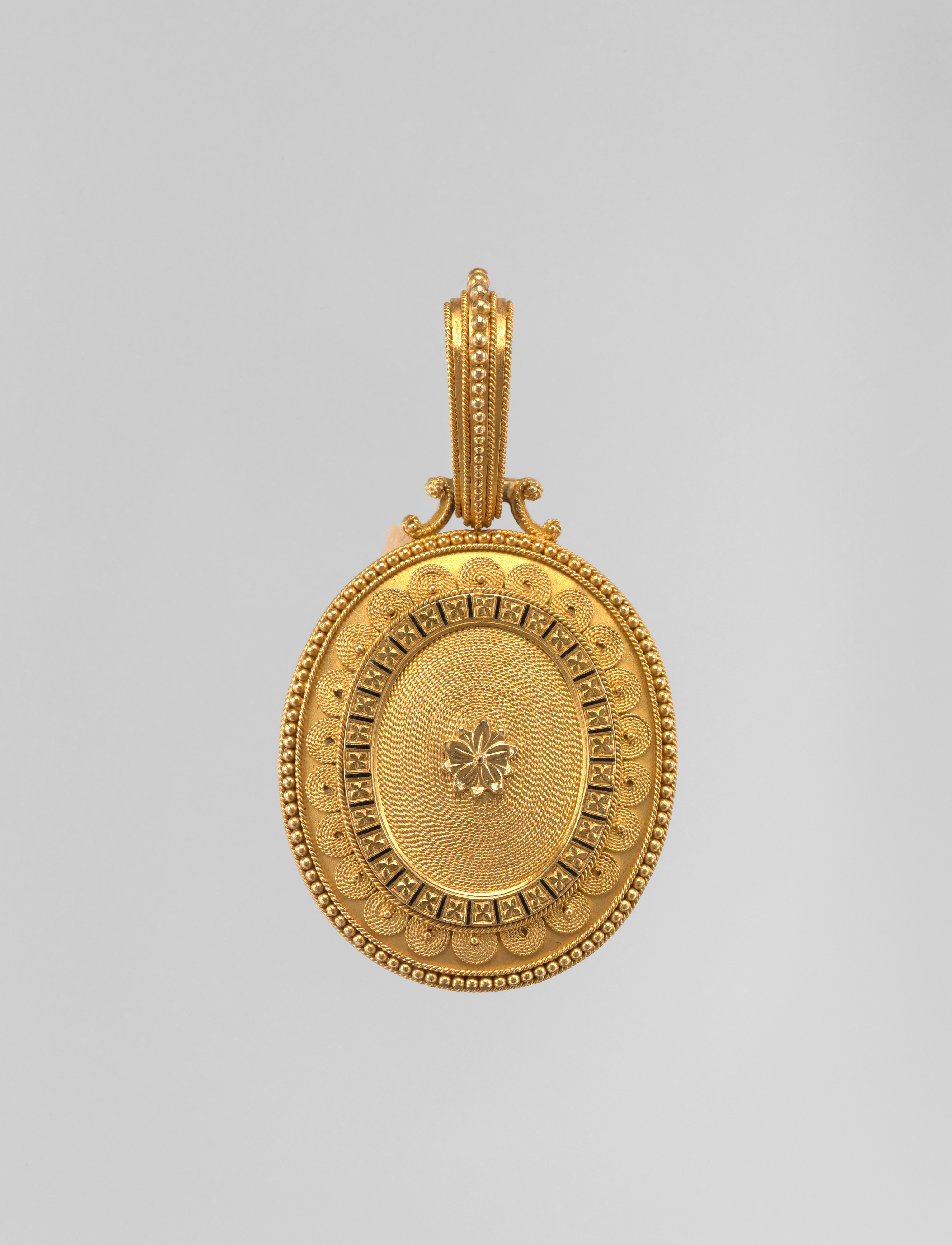Etruscan revival pendant
Probably Eugêne Fontenay French
Not on view
While the pendant is not marked by Eugène Fontenay (1824–1887), it exhibits many of stylistic features closely associated with his work, including the matte enamel decoration, and the use of rose-cut diamonds, fine granulation, and beading. Fontenay was one of the leading jewelers working in France in the third quarter of the nineteenth century, and his jewelry was considered among the most technically refined of the work produced at this time. Much of Fontenay’s jewelry was influenced by the antique jewelry of the Campana collection, purchased by the French state in 1861. This Etruscan revival pendant is a reflection of Fontenay’s keen interest in classical prototypes. It is only the second work by Fontenay to enter the Museum’s collection. The pendant belongs to a distinguished group of archaeological jewelry from the second half of the nineteenth century in the Metropolitan Museum.
This image cannot be enlarged, viewed at full screen, or downloaded.
This artwork is meant to be viewed from right to left. Scroll left to view more.



